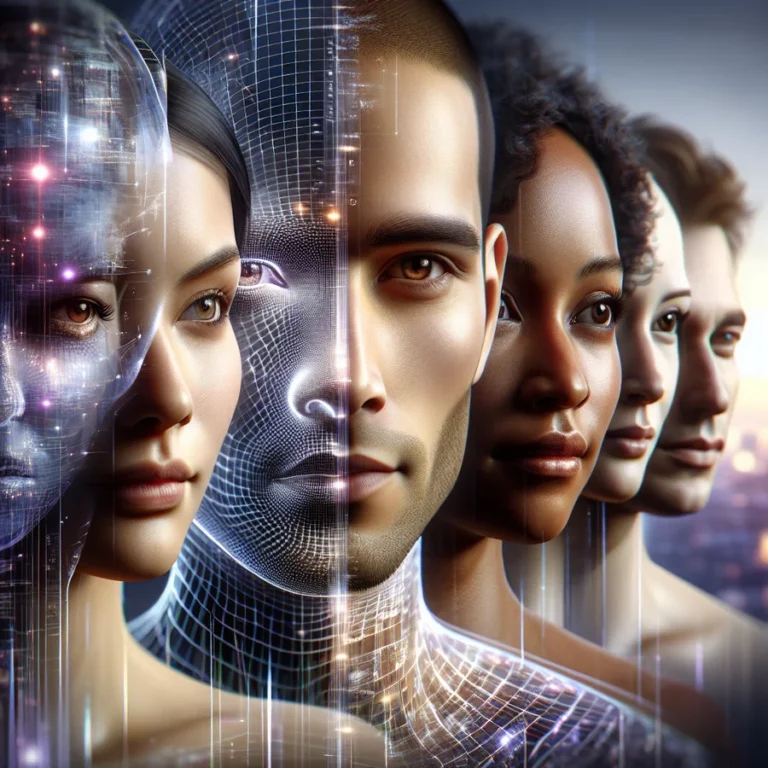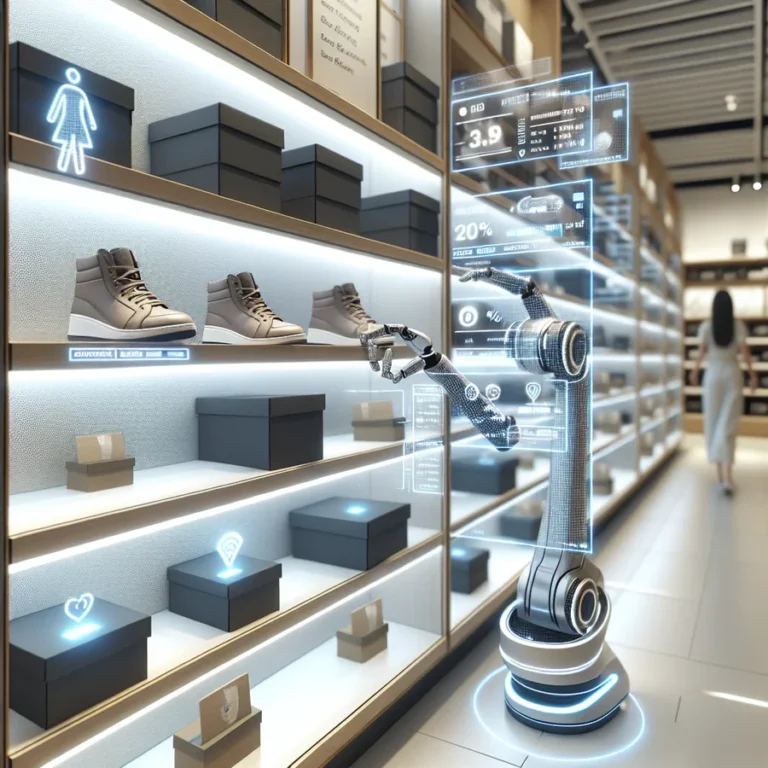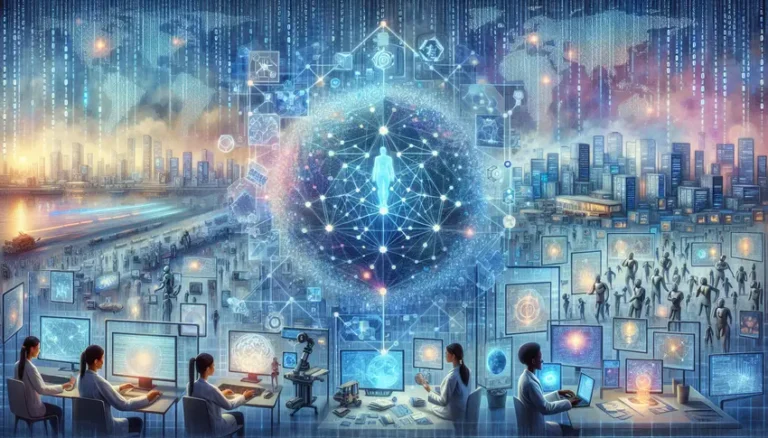AI in Government: Enhancing Public Services and Citizen Engagement
Imagine a government that anticipates your needs, responds instantly to your queries, and delivers services with unparalleled efficiency. This isn’t a futuristic fantasy. It’s the potential of AI in government, rapidly transforming how public services are delivered and how citizens engage with their governments. This guide explores how artificial intelligence is revolutionizing the public sector, making it more responsive, efficient, and citizen-centric.
From automating routine tasks to providing personalized services and enhancing public safety, AI in government is paving the way for a new era of governance. We’ll delve into real-world examples, examine the challenges, and explore the strategies for successful implementation. Get ready to discover how AI is not just a technological advancement, but a powerful tool for building a better future for all.
Understanding the Role of AI in Government
Artificial intelligence (AI) refers to computer systems designed to perform tasks that typically require human intelligence. Think learning, problem-solving, and decision-making. AI systems use algorithms and data to make decisions, often improving their performance over time through machine learning.
AI is not a single technology but a collection of tools and techniques. Here are some key components:
- Machine Learning (ML): Algorithms that allow computers to learn from data without explicit programming. They identify patterns and make predictions.
- Natural Language Processing (NLP): Enables computers to understand, interpret, and generate human language. This powers chatbots and virtual assistants.
- Computer Vision (CV): Allows computers to “see” and interpret images and videos. It’s used in public safety and infrastructure monitoring.
- Robotic Process Automation (RPA): Uses software “robots” to automate repetitive tasks, freeing up human employees for more complex work.
- Predictive Analytics: Uses data and algorithms to forecast future trends and events. This helps governments make proactive decisions.
Note: AI is about making government smarter, faster, and more responsive. It’s about using data and technology to improve the lives of citizens.
The Transformative Potential of AI in Public Services
AI in government has the potential to revolutionize public services in many ways. It can lead to more efficient, responsive, and cost-effective government operations. Here’s a closer look at its potential impact:
- Enhanced Decision-Making: AI systems can analyze large datasets quickly and accurately. This provides insights that help government officials make informed decisions.
- Improved Citizen Services: AI-driven platforms can streamline service delivery. This reduces wait times and improves access to information. Chatbots can provide instant responses to citizen inquiries.
- Cost Reduction and Efficiency: By automating repetitive tasks, AI can significantly reduce operational costs. Governments can reallocate these savings to critical areas.
- Predictive Analytics: AI can predict trends and potential issues before they arise. This is particularly useful in areas like public health.
- Public Safety: AI technologies can enhance public safety through crime prediction and prevention. They can also improve emergency response systems.
- Transportation and Infrastructure: AI can optimize traffic flow and reduce congestion through smart traffic management systems.
- Healthcare: In the healthcare sector, AI can improve patient outcomes through personalized medicine and predictive analytics.
- Administrative Efficiency: AI can automate document processing, data entry, and other administrative tasks, increasing efficiency and accuracy.
Reminder: AI is not a replacement for human employees. It’s a tool to augment their capabilities and free them up for more strategic work.
10 Ways AI is Driving Innovation in Government
AI in government is not just a theoretical concept. It’s already being implemented in various ways to improve public services and citizen engagement. Here are ten examples of how AI is driving innovation:
Automating Citizen Services with AI
Automated citizen services enhance service delivery and build greater trust. They also improve communication and engagement between citizens and their governments. For example, the U.S. General Services Administration (GSA) introduced Automated Contact Center Solutions (ACCS). This helps government agencies streamline their communications and improve citizen satisfaction.
Predictive analytics help agencies proactively address service delivery issues. The U.S. Social Security Administration can use AI to anticipate and resolve potential problems before they impact citizens.
Streamlining Welfare Distribution Using AI
AI systems use machine learning techniques to examine large datasets. They identify irregularities that could be signs of fraud or mistakes in welfare distribution. Research shows that AI predicts welfare dependency with greater accuracy than traditional methods.
By analyzing socio-economic and demographic data, AI algorithms can identify individuals at risk of becoming long-term benefit recipients. This allows for targeted interventions and support.
Enhancing Public Safety with AI
Predictive policing systems use AI to analyze historical crime data. They identify patterns that can forecast future criminal activity. In the Netherlands, predictive policing systems have been implemented in pilot cities, resulting in a reduction in crime rates.
Example: AI can analyze crime data to identify hotspots and deploy resources more effectively. This helps prevent crime and improve community safety.
Improving Disaster Response with AI
AI-driven systems process real-time data from sensors, satellites, and social media. This helps predict and respond to natural disasters. In Japan, AI on drones predicts natural disasters like earthquakes and typhoons.
Reminder: AI can provide faster, more effective responses to save lives and reduce damage during disasters.
Optimizing Urban Planning with AI
Urban development policies are informed by AI technology. This technology evaluates data on population trends, energy usage, and traffic flow. Barcelona’s traffic management systems have reduced congestion significantly using AI.
Note: AI helps create smarter, more sustainable cities by optimizing resource allocation and improving infrastructure management.
Personalizing Citizen Services Using AI
In healthcare and education, AI provides individualized recommendations. It customizes services according to each user’s needs. Estonia’s e-government platform uses AI to analyze user data and deliver customized interactions.
Example: AI can provide personalized healthcare recommendations and educational resources, improving outcomes for citizens.
Facilitating Data-Driven Policy-Making with AI
AI uses data mining and machine learning techniques to detect patterns of tax evasion. This improves collection efficiency. Singapore has implemented AI to analyze data and inform policy decisions.
Reminder: AI helps governments make more informed, evidence-based decisions that benefit citizens.
Modernizing Tax Collection with AI
Through the analysis of financial data, AI detects trends in tax evasion. This increases the effectiveness of tax collection. The French tax administration utilized AI and satellite imagery to identify undeclared swimming pools.
Example: This approach resulted in additional revenue for the government, demonstrating the power of AI in tax administration.
Enhancing Healthcare Services with AI
Predictive analytics and virtual healthcare assistants are powered by AI. This enhances patient outcomes. The NHS in the UK uses AI for early diagnosis of diseases like cancer.
Note: AI can enable timely treatment and improve patient survival rates, transforming healthcare delivery.
Supporting Cybersecurity Efforts with AI
By examining network data and spotting irregularities, AI systems identify and eliminate cybersecurity threats. Governments that implemented AI-based security measures saw a significant reduction in cyber breaches.
Reminder: AI protects sensitive data and maintains public trust by enhancing cybersecurity efforts.
Benefits of Using AI in Improving Government Efficiency
AI in government offers numerous benefits that enhance government efficiency. Here are some key advantages of using AI in government operations:
- Enhanced Decision-Making: AI systems analyze vast amounts of data quickly and accurately. This provides valuable insights that inform policy and decision-making processes.
- Improved Citizen Services: AI-powered tools provide instant responses to citizen inquiries. This reduces wait times and improves overall service quality.
- Cost Reduction: By automating routine tasks, AI reduces the need for manual labor. This leads to significant cost savings.
- Increased Efficiency: AI can streamline various government processes. This frees up employees to focus on more strategic activities.
- Enhanced Public Safety and Security: AI technologies can enhance public safety by identifying potential threats. They also enable faster response times.
- Optimized Resource Allocation: AI helps governments allocate resources more effectively. This ensures that resources are distributed where they are needed most.
- Improved Transparency and Accountability: AI systems can enhance transparency in government operations. This helps build public trust.
- Better Infrastructure Management: AI can optimize the management of public infrastructure. This reduces downtime and costs.
- Personalized Citizen Engagement: AI can provide personalized interactions with citizens. This enhances the overall citizen experience.
Note: AI is a powerful tool for improving government efficiency and delivering better services to citizens.
Challenges and Concerns Surrounding AI in Public Services
While AI in government offers a bright future for public services, some significant challenges and concerns need to be addressed to ensure its responsible and ethical implementation. Here are some key areas to consider:
- Bias and Fairness: AI algorithms are only as good as the data they’re trained on. Biased data can lead to biased AI decisions, potentially discriminating against certain groups.
- Transparency and Explainability: AI systems can be opaque in their decision-making process. This lack of transparency can erode public trust.
- Privacy and Security: Public services often handle sensitive citizen data. Ensuring the security of this data and protecting citizen privacy is crucial.
- Legal and Regulatory Issues: The rapid advancement of AI technology often outpaces the development of relevant laws and regulations.
- Public Trust and Acceptance: Building public trust in AI is crucial for its successful adoption. There can be resistance to AI technologies due to fear of the unknown.
Reminder: Addressing these challenges is essential for ensuring that AI is used responsibly and ethically in public services.
Ethical Concerns: Addressing Bias in AI Algorithms
AI systems can inadvertently perpetuate existing biases present in the data they are trained on. For example, a predictive policing algorithm trained on biased crime data may unfairly target certain communities.
Note: It’s crucial to address bias in AI algorithms to ensure fairness and equity in public services.
Data Privacy: Ensuring Citizen Data is Protected in AI-Driven Systems
Large volumes of personal data are necessary for AI systems to operate efficiently. Thus, it’s critical to make sure that this data is shielded against abuse and illegal access. The European Union’s General Data Protection Regulation (GDPR) sets strict data handling and privacy guidelines, which AI systems must comply with.
Reminder: Protecting citizen data is paramount when implementing AI in government.
Skill Gaps: Upskilling Public Sector Employees to Work with AI
A competent workforce is necessary to integrate AI into government operations, but the public sector frequently has a skill gap. Agencies require data scientists, machine learning engineers, and AI professionals. Upskilling current staff members through training initiatives is essential to closing this gap.
Note: Investing in training and development is crucial for successful AI implementation.
Cost of Implementation: Balancing Budgets with the Need for Advanced Technology
Implementing AI technologies can be costly, involving expenses related to government software, hardware, training, and ongoing maintenance. Governments must balance these costs with their budgets, which can be challenging, especially for smaller or resource-constrained agencies.
Reminder: Careful planning and prioritization are essential for managing the costs of AI implementation.
Strategies for Successful Integration of AI in Government Operations
Here are some key strategies for successfully integrating AI in government operations:
Planning and Prioritization
- Needs Assessment: Conduct a thorough review of government operations to identify areas where AI can offer the most significant benefits.
- Start Small, Scale Up: Begin with pilot projects in well-defined areas to gain experience and build public trust.
Building the Right Team
- Skills Development: Invest in training current government employees in AI literacy.
- Interdisciplinary Teams: Create teams with a mix of AI specialists, data scientists, and ethicists.
Data Considerations
- Data Quality: High-quality, accurate, and unbiased data is essential for training effective AI models.
- Data Privacy and Security: Ensure all citizen data used in AI applications is protected according to stringent privacy regulations.
Transparency and Explainability
- Explainable AI: Develop AI systems that can explain their decision-making processes in clear terms.
- Public Communication: Proactively communicate the benefits and limitations of AI use in public services.
Ethical Considerations
- Algorithmic Bias: Regularly audit AI algorithms for bias and develop strategies to mitigate it.
- Human Oversight: AI should be used as a tool to augment human decision-making, not replace it entirely.
Workforce Transition
- Reskilling and Retraining: Develop programs to help government employees transition to new roles as AI automates some tasks.
Long-Term Vision
- Continuous Improvement: Establish a framework for ongoing evaluation and improvement of AI systems.
- Collaboration: Encourage collaboration between government agencies, research institutions, and the private sector.
Note: These strategies are essential for ensuring that AI is implemented effectively and responsibly in government.
Case Studies of AI in Government Agencies
Here are a few examples of how governments around the world are leveraging AI in government to improve public services:
- AI in Healthcare: The UK’s National Health Service (NHS): The NHS has been leveraging AI to improve healthcare delivery and patient outcomes.
- AI in Transportation: Singapore’s Land Transport Authority (LTA): Singapore’s LTA has implemented AI-driven solutions to manage its complex transportation network.
- AI in Public Safety: The New York Police Department (NYPD): The NYPD has adopted AI technologies to enhance public safety and crime prevention.
- AI in Environmental Management: The Netherlands’ Rijkswaterstaat: Rijkswaterstaat employs AI to monitor and manage the country’s extensive network of waterways and flood defenses.
- AI in Tax Administration: The Australian Taxation Office (ATO): The ATO has integrated AI to enhance its tax compliance and fraud detection efforts.
- AI in Social Services: Denmark’s Employment Service: Denmark’s Employment Service uses AI to match job seekers with suitable employment opportunities.
- AI in Education: The U.S. Department of Education: The U.S. Department of Education is exploring AI to enhance personalized learning and administrative efficiency.
- AI in Estonia: Estonia’s government leverages artificial intelligence to enhance public services, streamline operations, and improve citizen engagement, setting a benchmark for digital governance.
Reminder: These case studies demonstrate the diverse applications of AI in government and its potential to improve public services.
The Role of Citizen Engagement in the Age of AI in Government
While AI offers incredible potential, it’s crucial to remember that citizen engagement remains at the heart of effective governance. Citizens play a vital role in advocating for transparency, holding public institutions accountable, and contributing innovative solutions.
Here’s how citizen engagement can be enhanced in the age of AI in government:
- Transparency: Governments should be transparent about how AI is being used and how it impacts citizens.
- Feedback Mechanisms: Citizens should have opportunities to provide feedback on AI-driven services and policies.
- Participation: Citizens should be involved in the design and development of AI solutions.
- Education: Citizens should be educated about AI and its potential impacts on society.
Note: Meaningful citizen engagement can lead to better governance, citizen empowerment, and strengthened public service delivery.
Future Trends and Possibilities for AI in Government Efficiency
The future of AI in government efficiency is brimming with exciting possibilities. Here are some trends and potential applications to keep an eye on:
- Hyper-personalized Citizen Services: Imagine AI-powered virtual assistants tailored to each citizen’s needs.
- Predictive Policy and Resource Allocation: AI’s ability to analyze vast datasets can be harnessed for more informed policy decisions.
- AI-driven Public Safety and Emergency Response: AI can analyze real-time data to predict and prevent crime outbreaks.
- AI for Infrastructure Management and Maintenance: Predictive maintenance using AI sensors can be extended to a wider range of public infrastructure.
- Citizen Participation and Collaborative Governance: AI-powered platforms can facilitate more inclusive and participatory forms of governance.
Reminder: The future of AI in government is bright, with the potential to transform public services and citizen engagement in profound ways.
Conclusion
AI in government is no longer a distant possibility; it’s a present-day reality transforming public services and citizen engagement. By automating tasks, enhancing decision-making, and personalizing services, AI is paving the way for a more efficient, responsive, and citizen-centric government.
However, the successful implementation of AI requires careful consideration of ethical concerns, data privacy, and workforce transition. By embracing transparency, fostering collaboration, and prioritizing citizen engagement, governments can harness the power of AI to build a better future for all.
Frequently Asked Questions about AI in Government
What is AI and how is it used in government?
AI refers to computer systems designed to perform tasks that typically require human intelligence. In government, AI is used to automate tasks, enhance decision-making, improve citizen services, and enhance public safety.
What are the benefits of using AI in government?
The benefits of using AI in government include enhanced decision-making, improved citizen services, cost reduction, increased efficiency, enhanced public safety, optimized resource allocation, and improved transparency.
What are the challenges of implementing AI in government?
The challenges of implementing AI in government include bias and fairness, transparency and explainability, privacy and security, legal and regulatory issues, and public trust and acceptance.
How can governments ensure the responsible use of AI?
Governments can ensure the responsible use of AI by addressing ethical concerns, protecting data privacy, investing in skills development, and prioritizing transparency and citizen engagement.
What are some examples of AI in government?
Examples of AI in government include automated citizen services, streamlined welfare distribution, enhanced public safety, improved disaster response, optimized urban planning, personalized citizen services, and modernized tax collection.






